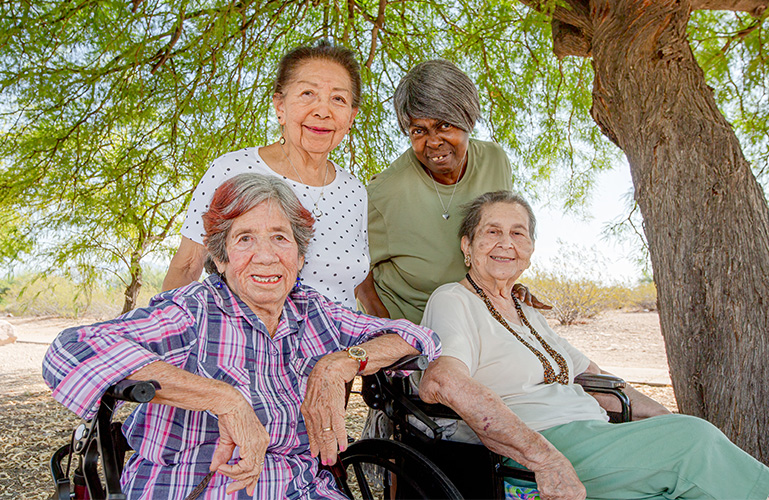Cuestionario final y agradecimientos

Para dar por finalizado este módulo y descargar el certificado correspondiente debe superar el cuestionario final.
Haga clic en el siguiente botón para acceder al cuestionario.
Queremos agradecer a las personas y organizaciones que colaboraron en la elaboración de este módulo:
Content developers:
Sarah Frost, Kylie Shae
Colaboradores:
Margaret Macaulay.
Revisores:
Margaret Macaulay, Catherine Murphy.
Videos, fotografías, ilustraciones y gráficos:
Codi Ash, Julie Desnoulez, Ainsley Hadden, Annette Inwood.
Participantes en el video:
Richard Inwood, Annette Inwood, Ash Mines, Kylie Shae.
Asociados en los planes piloto:
India: Mobility India; Rural Development Trust
Papúa Nueva Guinea: Departamento Nacional de Salud (NDOH) Subdivisión de Normas en las Instalaciones de Salud; Servicios de Salud de la Comunidad del Distrito Capital Nacional (NCDC); Servicio Nacional de Ortesis y Prótesis (NOPS); PNG Eye Care; Oficina de la OMS en Papúa Nueva Guinea.
Rumanía: Motivation Romania
Tayikistán: Ministerio de Salud y Protección Social de la Población de la República de Tayikistán (MoHSP); Oficina de la OMS en Tayikistán.
Materiales originales y bibliografía
Continence Foundation of Australia. Caring for Someone with Bladder Problems. Canberra: Commonwealth of Australia (Department of Health); 2017 (consultado el 6 de enero de 2021).
Continence products. Canberra: Commonwealth of Australia (Department of Health); 2016 (consultado el 6 de enero de 2021).
Continence Product Advisor [sitio web]. Bristol: International Continence Society; 2021 (consultado el 6 de enero de 2021).
Fader M, Cottenden A, Chatterton C, et al. An International Continence Society (ICS) report on the terminology for single‐use body worn absorbent incontinence products. Neurourology and Urodynamics. 2020; 39: 2031– 2039. Doi: doi.org/10.1002/nau.24488
Macaulay M, Wilks S, Murphy C, Fader M, Gillespie B, Cottenden A. Are sustainable continence products an aspiration or a current option? Nursing Time. 2020;116(9)32-37.
Malhotra NR, Kuhlthau KA, Rosoklija I, Migliozzi M, Nelson CP, Schaeffer AJ. Children’s experience with daytime and nighttime urinary incontinence – A qualitative exploration. JPUROL. 2020;16(5) 535.e1-535.e8. doi: doi.org/10.1016/j.jpurol.2020.10.002
Altman D, Cartwright R, Lapitan MC, Milsom I, Nelson R, Sjöström S et al. Epidemiology of urinary incontinence (UI) and other lower urinary tract symptoms (LUTS), pelvic organ prolapse (POP) and anal incontinence (AI). In Abrams P, Cardozo L, Wagg A, Wein AJ, editores, Incontinence: 6th International Consultation on Incontinence, Tokyo, septiembre del 2016 . Bristol: International Continence Society; 2017.
Murphy C, Cowan A, Moore K, Fader M. Managing long term indwelling urinary catheters. BMJ. 2018; 363:k3711. doi: doi.org/10.1136/bmj.k3711.
Murphy C, de Laine C, Macaulay M, Fader M. Development and randomised controlled trial of a Continence Product Patient Decision Aid for men postradical prostatectomy. J Clin Nurs. 2020;29(13-14):2251-2259. doi:10.1111/jocn.15223.
Rosato-Scott C, Barrington DJ, Bhakta A, House SJ, Mactaggart I, Wilbur J. How to Talk About Incontinence: A Checklist. Brighton: The Sanitation Learning Hub, Institute of Development Studies; 2020 (consultado el 6 de enero de 2021).
Rosato-Scott C, Barrington DJ, Bhakta A, House SJ, Mactaggart I, Wilbur J. Incontinence: We Need to Talk About Leaks. Frontiers of Sanitation: Innovations and Insights. 2020;16. Doi: 10.19088/SLH.2020.005.
Rosato-Scott C, Giles-Hansen C, House S et al. Guidance on supporting people with incontinence in humanitarian and low- and middle-income contexts (LMICs). Leeds: LMIC-Incontinence-email-group , University of Leeds; 2019 (consultado el 6 de enero de 2021).
Schmitt ML, Clatworthy D, Gruer C, Sommer M. Menstrual Disposal, Waste Management & Laundering in Emergencies: A Compendium (primera edición). New York: Columbia University and International Rescue Committee; 2020 (consultado el 6 de enero de 2021).
Understanding Continence Promotion: Effective Management of Bladder and Bowel Dysfunction in Adults [curso en línea]. Seafield: Association for Continence Advice; 2021 (consultado el 6 de enero de 2021).
Urinary incontinence. En: Mayo Clinic [sitio web]. Rochester: Mayo Foundation for Medical Education and Research; 2021 (consultado el 6 de enero de 2021).
Material adicional
Association for Continence Advice, Understanding Continence Promotion: Effective Management of Bladder and Bowel Dysfunction in Adults. : International Consultation on Incontinence (ICI), International Continence Society (ICS), University of Southampton and University College London, Continence Product Advisor.

